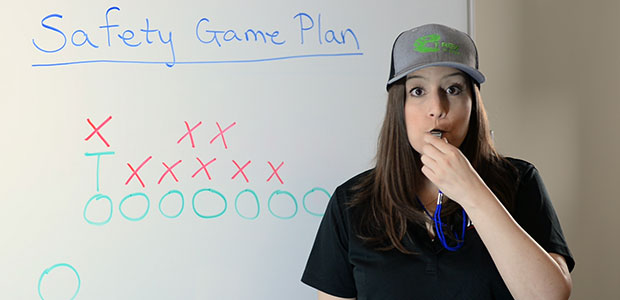
Choosing Microlearning for Safety
Safety managers can make safety training more effective by supplementing formal training methods with microlearning.
- By M.B. Sutherland
- Nov 11, 2019
No matter what the industry, if there’s one word that consistently describes safety managers, it’s busy. It takes an incredible amount of attention and juggling to keep track of all that you do for the people who rely on you to help them stay safe. That level of overload can make crucial tasks like safety training a double-edged sword. It’s beneficial for you and your people, but it takes time out of your busy schedule and theirs.
While most safety managers have a library of training classes that they collect through the years, there will always be new topics and regulations to cover, and it never hurts to offer something your employees haven’t seen before. Safety training can be made easy by downloading ready-to-use presentations from the internet. You can make safety training more effective by supplementing your formal training with microlearning.
What is Microlearning?
Microlearning is training that’s broken down into short segments—usually between 30 seconds and 5 minutes long. It’s like a YouTube video.
“If someone wants to learn how to do something super quick, they say, ‘Let’s go to YouTube and find the shortest video!’ Microlearning is similar,” said Dayna Nota, Manager of Training and Development at Magid.
Every safety manager knows it can be hard to keep people’s full attention in safety training, even when you’re talking about matters of life and death. Microlearning gets around that by being brief and to the point, and if possible, entertaining.
“Ideally, microlearning should be on a topic you’ve already learned, but in a different format,” Nota said. “It can be hard to remember things from a training class or a conference, so it should be a good refresher. On the flipside, you can also use it as prework before a training session.”
So, if you conducted formal training on ladder safety, complete with explanations, slides, and hands-on demonstrations, you can follow it up a week later with a quick, microlearning video of ladder safety reminders.
The option to send a link can be a “huge benefit for safety managers training their people. You can put it out there once and your workers can watch it over and over and over,” Nota said.
How Does It Keep My Workers Safe?
Microlearning takes advantage of the psychological concept of The Spacing Effect. A study published in the US National Library of Medicine found that “information that is spaced over time is better remembered than the same amount of information massed together.” In other words, cramming for a test helps you remember something for a short period of time. But learning something and then being reminded of what you learned sometime later, and again a while later, and again even later, solidifies the knowledge in your mind and helps you remember it for the long term.
“Repetitiveness is key. The more you hear something, the more you do something, the more it’s going to stick," Nota said. “What’s great about microlearning is it gives an opportunity to repeat or preview information without a whole lot of disruption from a learner’s perspective.”
Microlearning vs. Traditional Training
Again, microlearning isn’t meant to replace traditional training. It’s meant to supplement formal training to reinforce lessons and act as a timely reminder. However, microlearning segments have the added benefit of working around many of the unavoidable problems you encounter with traditional training.
Microlearning Opportunities
The brief format of microlearning modules makes them incredibly flexible and usable in many ways. You can use them on a regular schedule—like during your daily or weekly toolbox talks or more formal safety meetings. If you want to keep banging the drum, you can even loop it on a breakroom screen.
You can assign a microlearning segment to your team if you see concerning patterns like workers neglecting to wear eye protection or pushing their protective sleeves up or down. You can also assign them to individuals if most of your people are following safe practices, but you have just a few who need reminding.
Schedule microlearning modules strategically to reinforce learning at intervals after training, or assign them ahead of an event or before your workers encounter risky circumstances like very hot or cold conditions.
Where Can I Find Microlearning?
If you don’t have the time or resources to create your own microlearning modules (and really, what safety manager does?), you can find them for free on the internet. OSHA offers a library of short videos on its website for free microlearning downloads.
This article originally appeared in the November/December 2019 issue of Occupational Health & Safety.